Sabbatical Journey
On our travels in southern Malawi, we have had the opportunity to spend time in 3 of the 10 national parks. For a small country, about half the size of the state of Colorado, there is incredible diversity in the landscapes, eco systems, and geographic features. This means that even in a short drive it seems like everything changes (not unlike a drive from Denver to Moab!).
Our first stop after Blantyre was Majete National Park. This park is in a somewhat mountainous (maybe hilly for us from Colorado) region with the Shire River running through it a few hundred miles north of where it will flow into the Zambezi River. We are visiting not long after the rainy season as the country heads into winter. This meant very dense and green vegetation and cooler temperatures….at least slightly cooler at night (dipping to about 60 degrees) but still quite hot during the day (80-90).
We stayed at a lodge inside the park set up with individual semi-permanent tents and then a common dinning area overlooking a water hole and open grassland. While the park itself is fenced — to keep poachers out more than keeping animals in — the lodge was not, so we had some very close encounters with animals! Yikes! From our dinner table, tent porch, or relaxing book-reading spot, we could take in the playful antics of the baboons, rutting habits of the impalas, and the general peacefulness of watching elephants, antelope, warthogs and baboons all drinking from the same spot.
This was Miriam’s first safari and our first drive out did not disappoint. Actually, that ended up being our best drive for overall sightings of our time in Malawi. We have an animal list at the end of this section just so it isn’t so overwhelming. We had a wonderful safari driver and guide in Osman — he was extremely welcoming, kind and knowledgeable. He could speak at length about any species in the park from birds to mammals to trees and flowers. It was so much information to take in, I feel like we could only absorb a small percentage. Each day we were there, we had a sunrise safari drive before breakfast for a few hours and then a late afternoon drive, with sunset drink stop and then nighttime safari drive to follow. Quite an adventure!
This park, like many in Malawi and surrounding countries in sub-Saharan Africa, is now run by African Parks, an international NGO who specializes in taking over direct responsibility for parks and other protected areas. They work in conjunction with governments and local communities to protect the wildlife, promote tourism and provide the management needed to support that tourism infrastructure, while also working with local communities surrounding the parks. In Majete, we saw the fruits of their labor as the populations of the animal species (some just protected and others reintroduced the area and then protected) are booming. So much so, that a few years ago a number of the elephants had to be relocated to another national park in Malawi to reintroduce the species there and control the number in Majete.
Malawi’s National Parks
Majete, Liwonde, and Lake Malawi
On our travels in southern Malawi, we have had the opportunity to spend time in 3 of the 10 national parks. For a small country, about half the size of the state of Colorado, there is incredible diversity in the landscapes, eco systems, and geographic features. This means that even in a short drive it seems like everything changes (not unlike a drive from Denver to Moab!).
Our first stop after Blantyre was Majete National Park. This park is in a somewhat mountainous (maybe hilly for us from Colorado) region with the Shire River running through it a few hundred miles north of where it will flow into the Zambezi River. We are visiting not long after the rainy season as the country heads into winter. This meant very dense and green vegetation and cooler temperatures….at least slightly cooler at night (dipping to about 60 degrees) but still quite hot during the day (80-90).
We stayed at a lodge inside the park set up with individual semi-permanent tents and then a common dinning area overlooking a water hole and open grassland. While the park itself is fenced — to keep poachers out more than keeping animals in — the lodge was not, so we had some very close encounters with animals! Yikes! From our dinner table, tent porch, or relaxing book-reading spot, we could take in the playful antics of the baboons, rutting habits of the impalas, and the general peacefulness of watching elephants, antelope, warthogs and baboons all drinking from the same spot.
This was Miriam’s first safari and our first drive out did not disappoint. Actually, that ended up being our best drive for overall sightings of our time in Malawi. We have an animal list at the end of this section just so it isn’t so overwhelming. We had a wonderful safari driver and guide in Osman — he was extremely welcoming, kind and knowledgeable. He could speak at length about any species in the park from birds to mammals to trees and flowers. It was so much information to take in, I feel like we could only absorb a small percentage. Each day we were there, we had a sunrise safari drive before breakfast for a few hours and then a late afternoon drive, with sunset drink stop and then nighttime safari drive to follow. Quite an adventure!
This park, like many in Malawi and surrounding countries in sub-Saharan Africa, is now run by African Parks, an international NGO who specializes in taking over direct responsibility for parks and other protected areas. They work in conjunction with governments and local communities to protect the wildlife, promote tourism and provide the management needed to support that tourism infrastructure, while also working with local communities surrounding the parks. In Majete, we saw the fruits of their labor as the populations of the animal species (some just protected and others reintroduced the area and then protected) are booming. So much so, that a few years ago a number of the elephants had to be relocated to another national park in Malawi to reintroduce the species there and control the number in Majete.

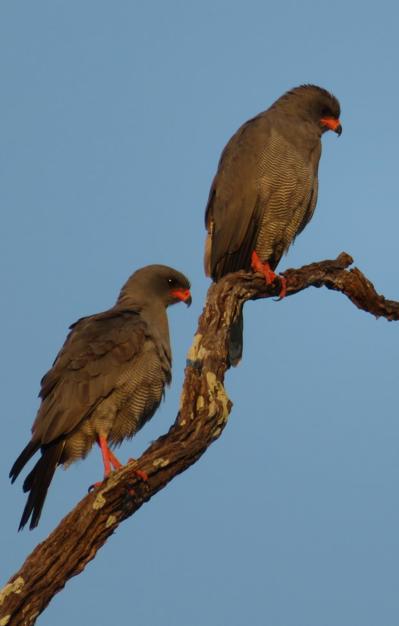

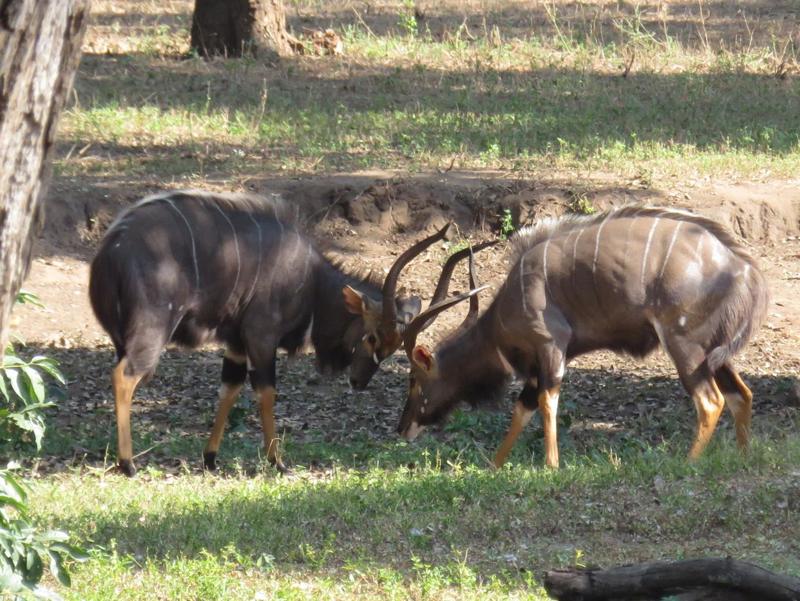

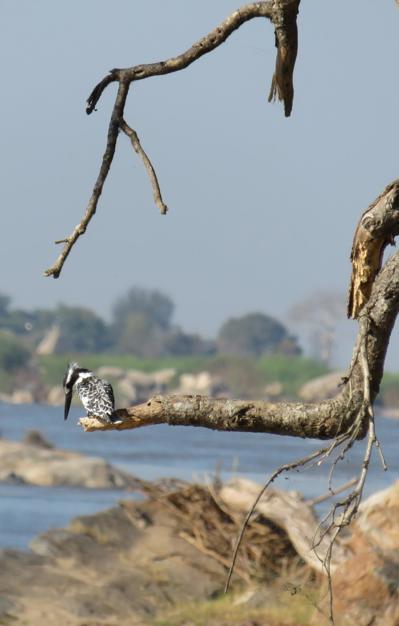
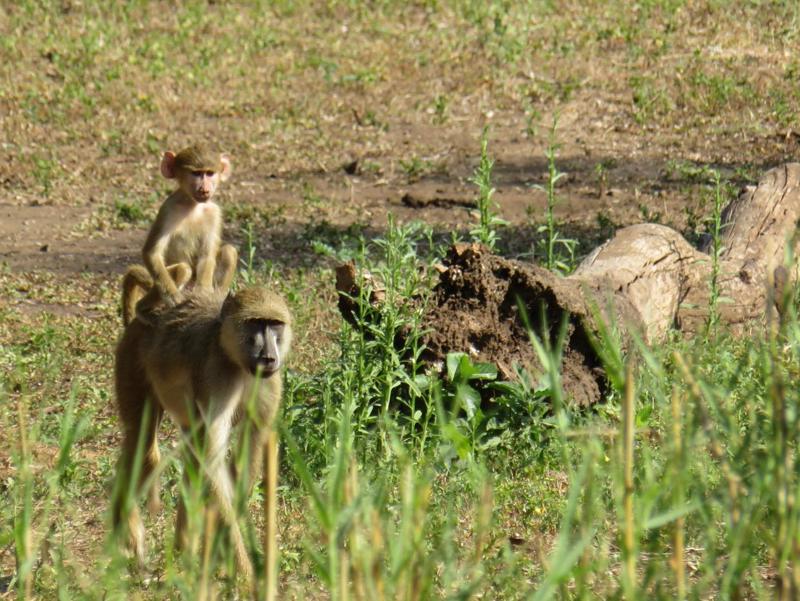
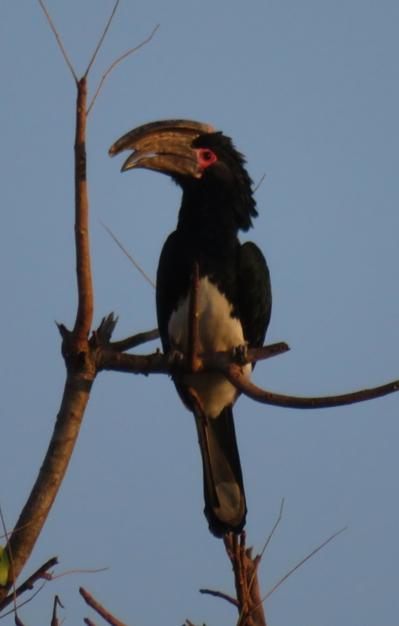
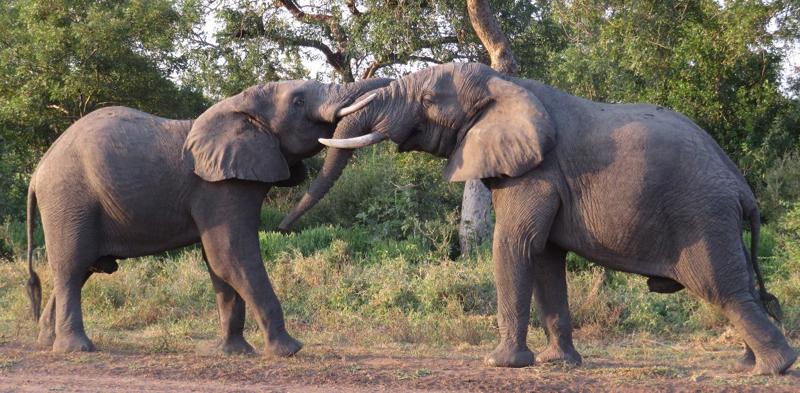
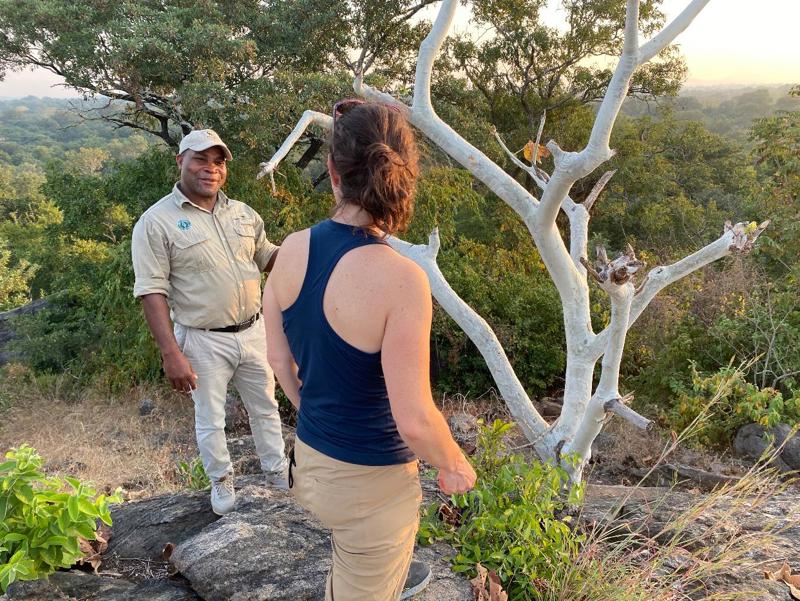

After a few days on the Zomba Plateau, we continued north to Liwonde National Park. Again this park is along the Shire river, but in a much flatter and more open landscape. At Liwonde we had a similar schedule of early morning and evening safaris, with the added option of a boat safari instead of just the drives, which gave up close hippo and crocodile sightings. Like Majete, we had spectacular and plentiful bird sightings. Our highlights, though, were cheetahs, a serval, civets, porcupines, a jackal and several types of mongooses.
Malawi was hit by cyclone Ana in 2022 and then the huge cyclone Freddy in March 2023 (twice! since it made landfall, went back out to sea, and then made landfall again). These two storms dumped way more water in Malawi than is normal. This has meant a lot of destruction and damage in cities and villages, but also has changed the flow and depth of the water in the rivers and lakes. At both Majete and Liwonde, this rise in the river took out some of their piers and docks, and also changed the flow of the river which has impacted animal habitats.
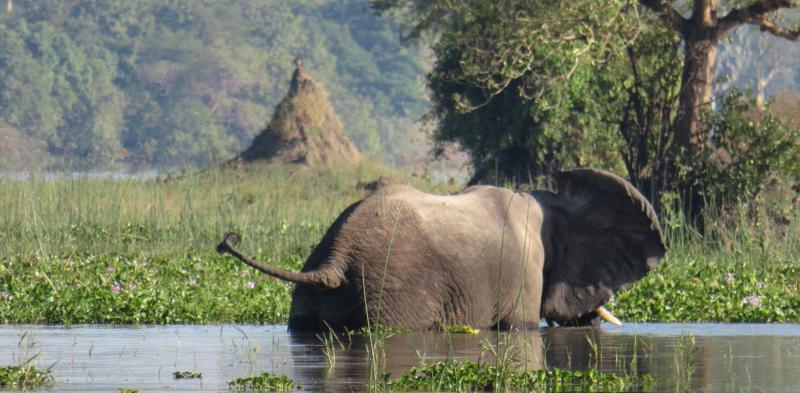

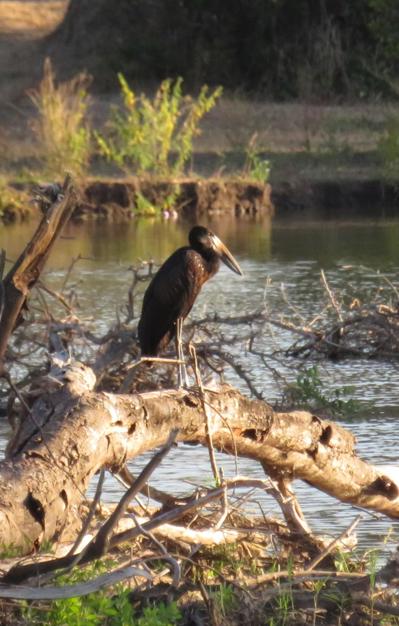
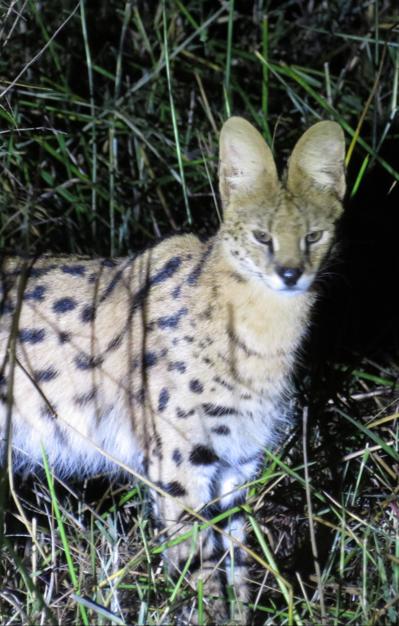


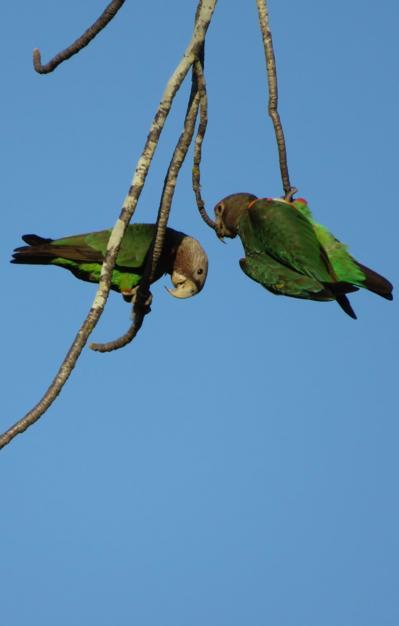
The final national park we visited in Malawi was Lake Malawi. The lake is one of the biggest freshwater lakes in the world (and bigger now again with the impact of the cyclones) and notable for the biggest variety of fresh-water tropical fish. We stayed in a lodge on an island in the lake, similar to the other two parks with semi-permanent tents and then a central area for dining and recreation. We hiked a little, kayaked around the island, watched the sunset from both land and a boat cruise, but mostly just relaxed. Like the other parks, the birds are a sight to behold and we are also getting our share of lizards (from tiny to our size!) as well as a few snakes. Perhaps our favorite lizard friend, who we see at the same place often, is a two-tailed lizard!


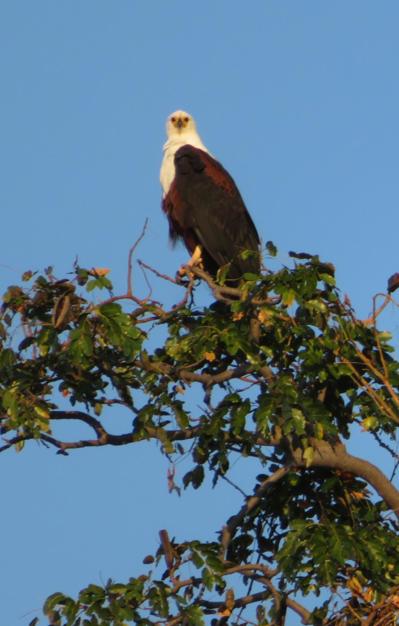
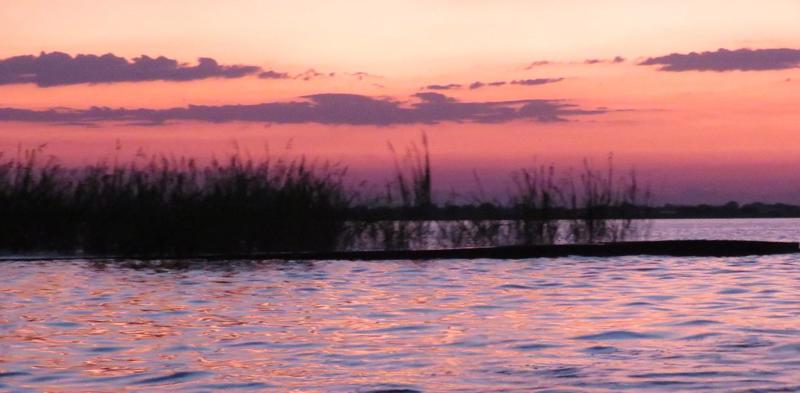

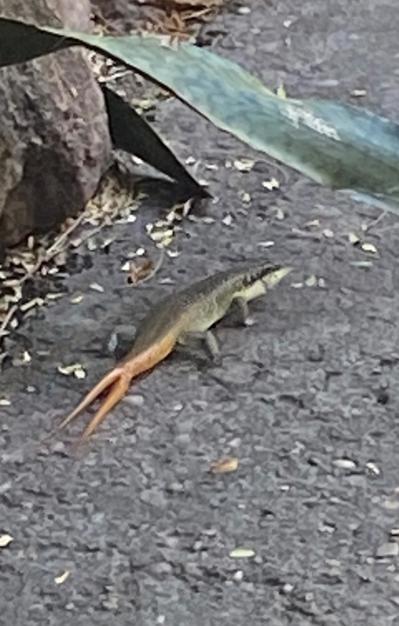
1.
Foreword
2.
The Itinerary
3.
Packing
4.
Cairo - Part 1
5.
Cairo - Part 2
6.
Sites of Ancient Egypt
7.
Egyptian Temples
8.
Valley of the Kings
9.
Egyptian Culture and Final Thoughts
10.
From Egypt to Morocco
11.
Northern Morocco
12.
Water and Climate Issues
13.
Cultural Capital of Morocco
14.
The Sahara Desert and Atlas Mountains
15.
The Road of 1000 Kasbahs and onto Marrakech
16.
A Wee Break in Londontown
17.
Malawi - First Impressions
18.
BEE World Pastor's Course
19.
Malawi’s National Parks
20.
Zomba Plateau
21.
Malawi, a Retrospective
22.
Plant with Purpose Tanzania
23.
Tanzania Safari
24.
Safari Animal Sighting List
25.
Enchanting Istanbul
26.
Classical Turkey & the Aegean Coast
27.
Cappadocia
28.
Lisbon
29.
Portugal's Heartland
30.
A Rocha Visit and the Southern Coast of Portugal
31.
Welcome
32.
Looking Back and Moving Forward
33.
...and home!
Share your travel adventures like this!
Create your own travel blog in one step
Share with friends and family to follow your journey
Easy set up, no technical knowledge needed and unlimited storage!
© 2025 Travel Diaries. All rights reserved.